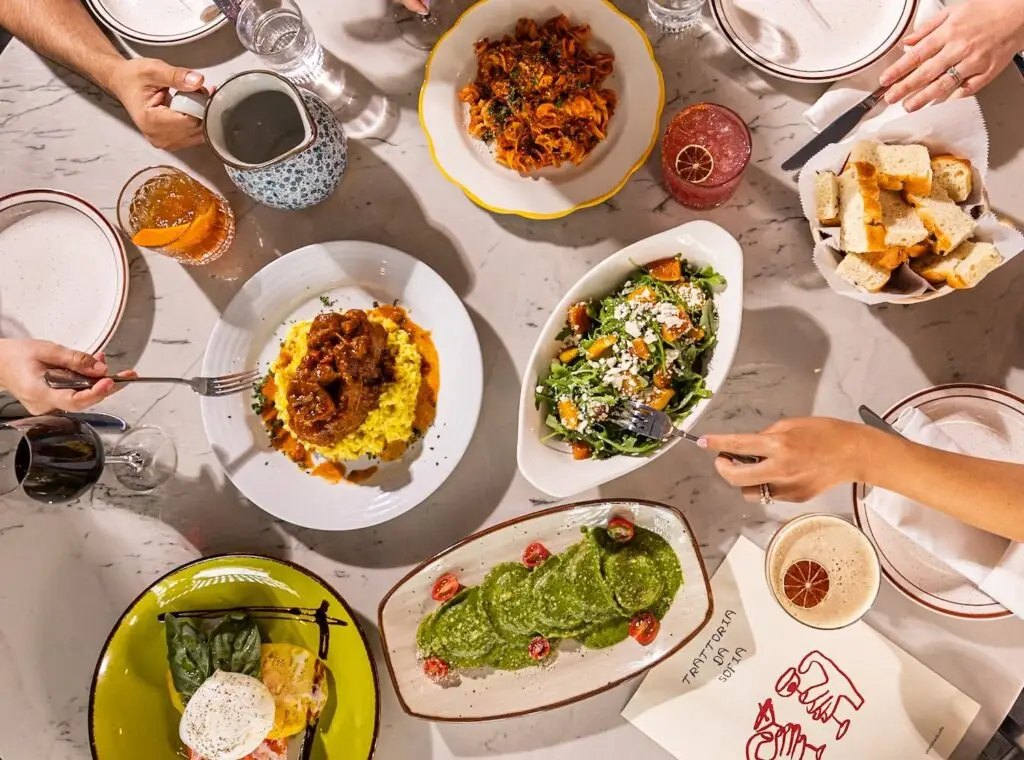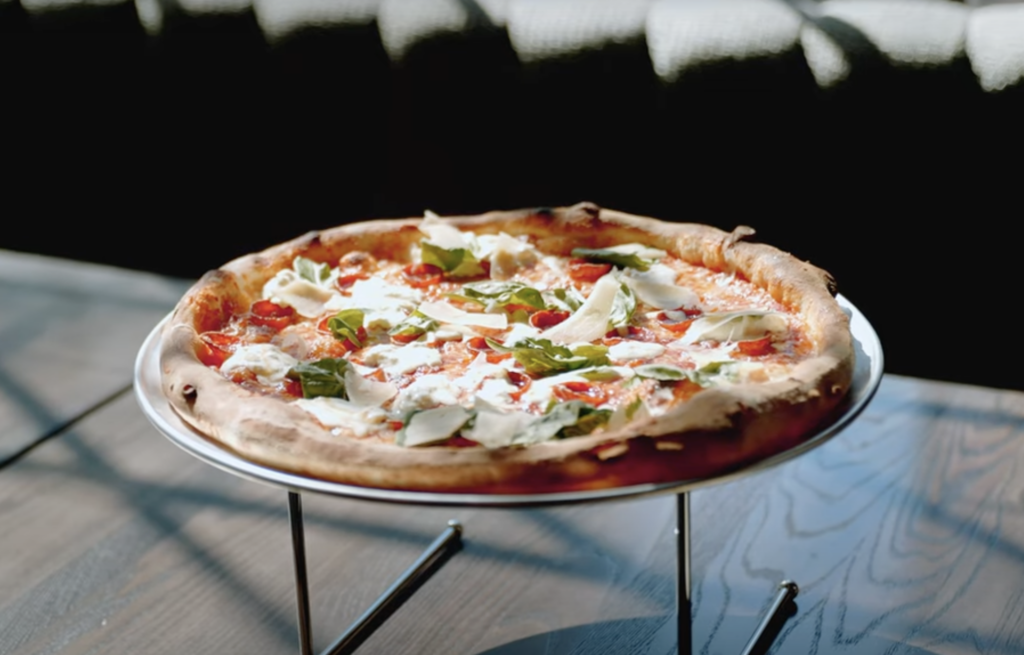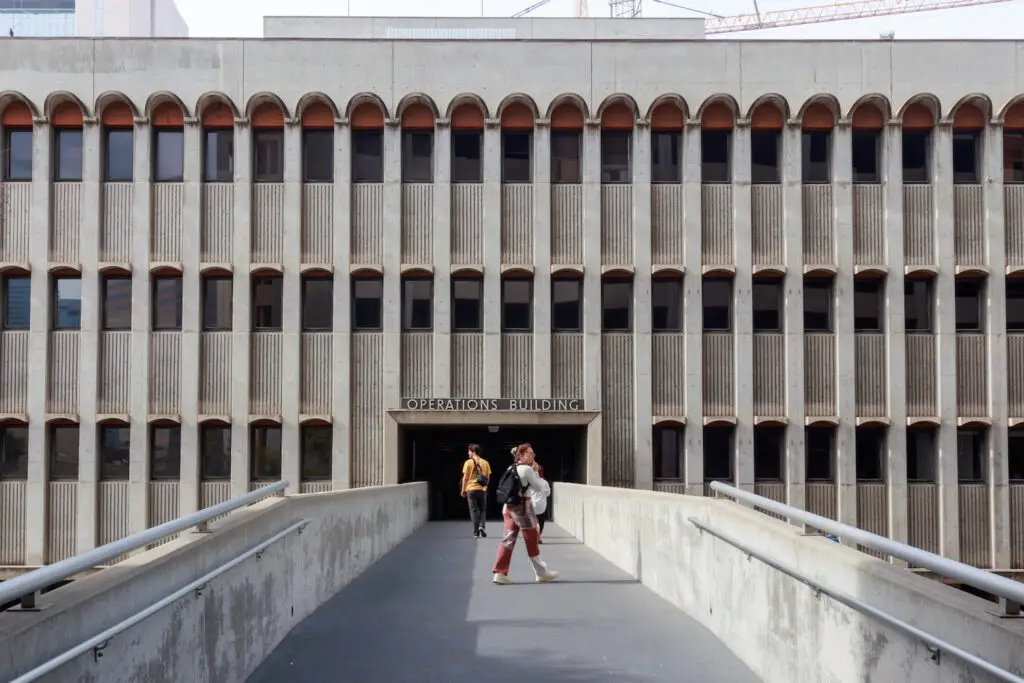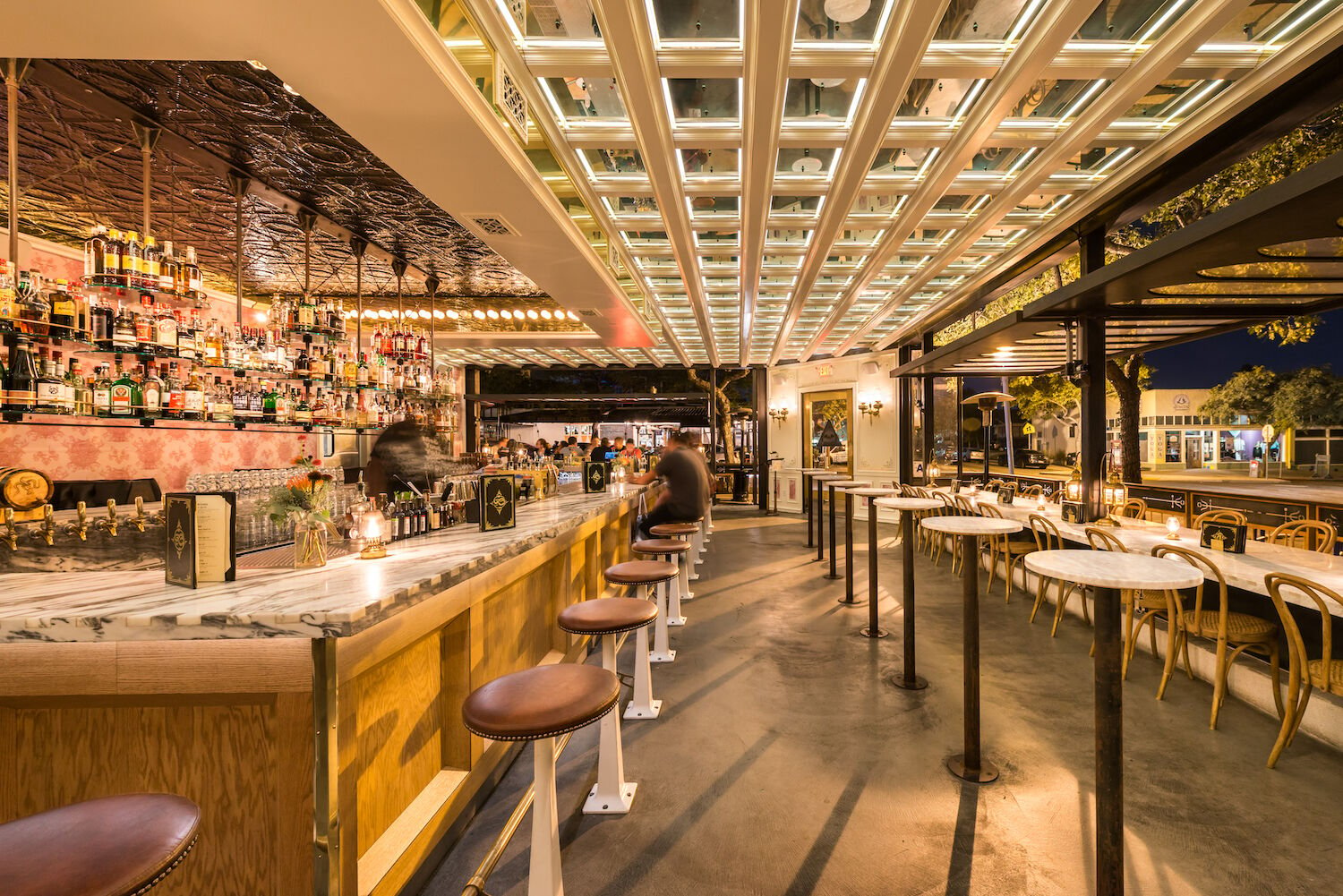
Kindred, South Park
I grew up in a Christian home where my parents would always tell me I had “a servant’s heart,” which seemed a bit demeaning, like I didn’t have a purpose of my own. Then again, the meek are supposed to inherit the earth, so what do I know?
In a twist of irony, I also grew up on a barstool. My father was a successful restaurateur in Hawai’i, so I became a seasoned diner at the tender age of always. The amount of restaurant meals I’ve had is obscene. This privilege is not lost on me, but I’ve made up for it on the other side. The number of tables I’ve served trumps the times someone has served me by many zeros. How? It’s simple. My degree is in theatre.
But how does someone like me, with an academic foundation of human emotions and 25 years of experience in the service industry—or even a fledgling restaurant worker—compare with targeted technology in the form of robots that are designed to perform the functions of a server?
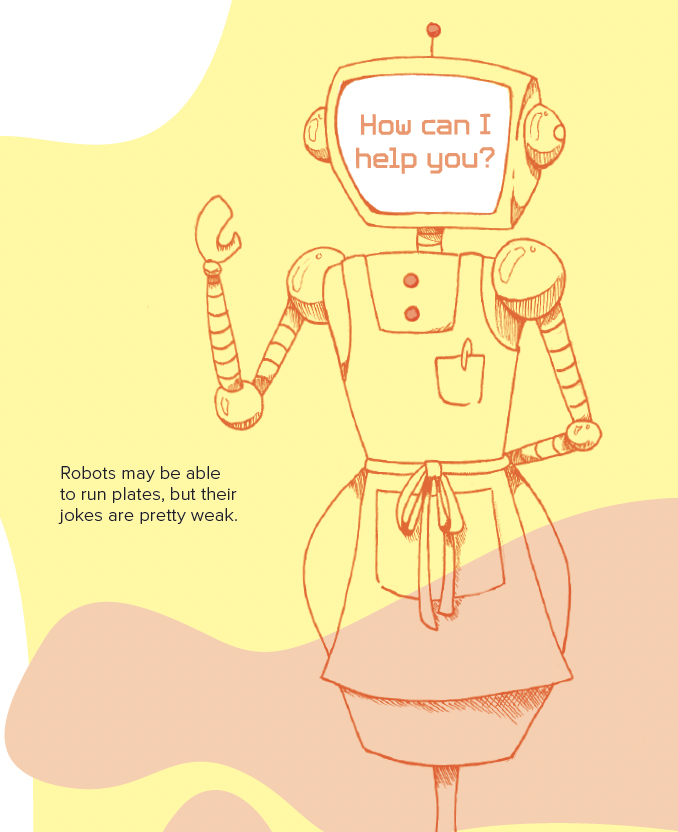
Robots in SD’s food scene
Illustration by Samantha Lacy
Though personality pays on the restaurant floor (it’s true; engagement equals tips), the guest comes first. In this regard, robots are the ultimate food runner. They have no ego to get in the way, no livelihoods. They are perfunctory.
Plus, this new fleet of robot servers from companies like Keenon and Daash Robotics have the bells and whistles to charm, with wide screens, language functions, and cute theme songs. If a sleekly designed brainchild of tech moguls can do the job, why not let them—especially if you don’t have to part with that extra 20 percent?
Money is the crux of this debate. Robot servers save customers and restaurant owners money, since they don’t request or require tips or hourly wages. A Daash XL robot, a shelf-like unit that features four stacked trays and carries a weight load of 80 pounds, costs $600 a month when rented from the company. If you buy it outright, the machine costs $20,000 (and you take on responsibility for any repairs). The company’s website boasts that one robot “replaces up to two staff members.”
The typical hourly rate for a food runner in San Diego is $16.30, with five six-hour shifts a week being the industry standard. That comes out to $489 a week and $1,956 a month to pay the wages of one server, who performs a similar task to this set of shelves—but, if we’re playing devil’s advocate, robots never call out, take extended breaks, or check their phone while on the clock. However, this Daash XL couldn’t tell you if your allergy request has been accounted for, nor can it elegantly place the plate in front of you.
Ultimately, no one can replace a server—not even a bad one. Engagement and community are at the core of this centuries-old ritual called hospitality. We don’t go to restaurants to eat. We dine. We experience.
The service industry was disproportionately hit by Covid, so it’s no surprise that we’ve seen a mass exodus of employees from restaurants, leaving the door open for robots to roll right in. There are myriad reasons: low pay, low morale, and even low expectations of a life well-lived. There is a sliding scale of truth to these reasons. Some employers skim from the top. Some provide. Some instill aspiration and ambition. And, sometimes, it’s just a job. It’s a game of perspective, with a moving target of both monetary and spiritual fulfillment.
Servers are allowed to have a change of heart, but they’ll always need to start with one.

